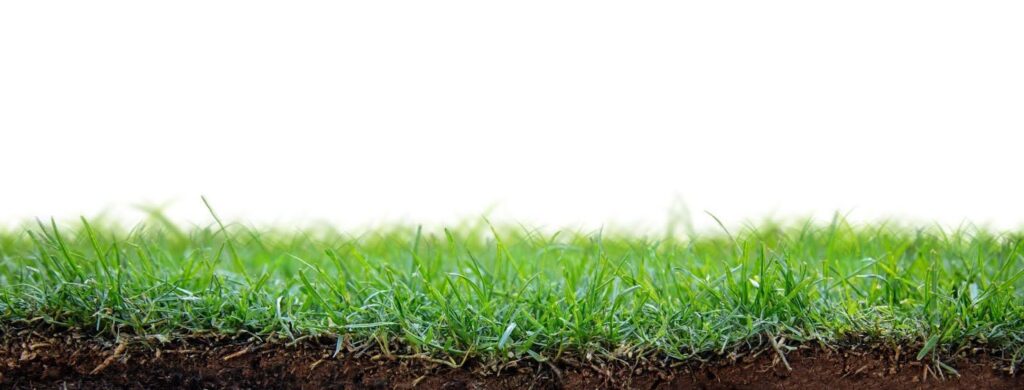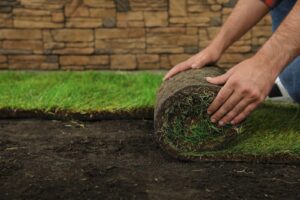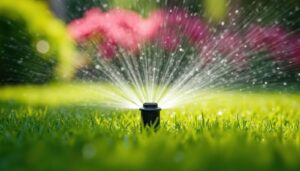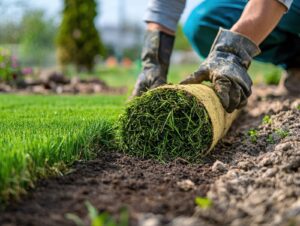A lush, green lawn doesn’t have to come at the expense of the environment – which is why sustainable lawn care is so important.
You can maintain a beautiful outdoor space with sustainable lawn care while conserving resources and protecting local ecosystems. Simple, eco-friendly practices — like buying sod — make a big difference in how your yard impacts the planet.
From choosing the right grass to mindful watering and reducing chemical use, many ways exist to create a vibrant, sustainable lawn that thrives. Let’s explore the best strategies to keep your lawn healthy, resilient, and environmentally friendly.
1. Choose the right grass for your climate
Choosing the right grass for your climate is a crucial first step toward a sustainable lawn. Here’s how to approach it:
Understand your climate zone
Different grass species thrive in different conditions, so it’s important to identify your local climate zone. The United States is divided into warm-season and cool-season zones.
Warm-season grasses, like Bermuda and Zoysia, do well in southern areas with long, hot summers. In contrast, cool-season grasses like Kentucky Bluegrass and Fescue are better suited for northern regions with colder winters. Buying sod is often a great solution.
Evaluate your lawn’s sun exposure
Some grasses need full sun to thrive, while others are able to tolerate shade. If your lawn has many shaded areas, choose a grass variety that performs well with less sunlight.
Consider your soil type
The type of soil you have also influences your grass selection. Some grasses prefer sandy, well-drained soil, while others do better in clay-rich or loamy soil. Testing your soil will help determine which grass species will establish best.
Match grass to maintenance needs
If you want a low-maintenance lawn, choose a hardy grass that requires minimal watering and mowing. Native or drought-resistant varieties are ideal for sustainability, as they use fewer resources and require less upkeep.
By selecting a grass type (or buying sod) that’s adapted to your climate and soil, you’ll create a healthier and more resilient lawn, saving water and reducing the need for chemical interventions.
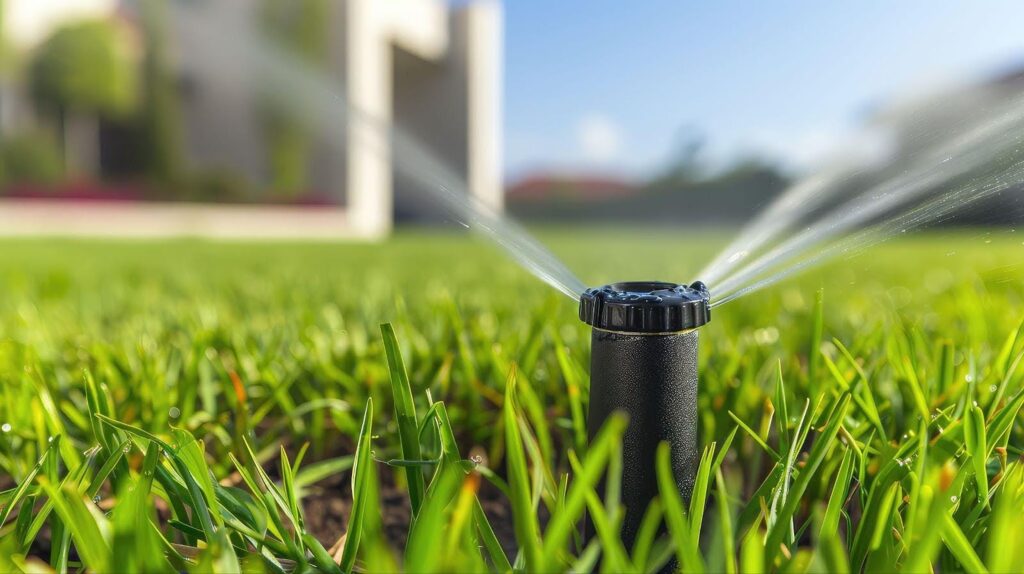
2. Water smartly and efficiently
Watering smartly and efficiently is essential for sustainable lawn care because it minimizes water waste and promotes a healthier, more resilient lawn. Here’s why it matters:
Conserves water resources
Freshwater is a limited resource, and traditional watering practices waste thousands of gallons each year. Using efficient watering techniques reduces your impact on local water supplies and contributes to environmental conservation.
Promotes deep-root growth
Watering deeply but infrequently encourages grass roots to grow deeper into the soil. Deep roots are better equipped to access water and nutrients, making your lawn more drought-tolerant and less reliant on frequent watering.
Prevents overwatering
Overwatering could lead to several problems, such as shallow root systems, fungal growth, and increased runoff that carries fertilizers and pollutants into waterways. By watering only when necessary and focusing on soil moisture, you maintain a healthy, robust lawn with less risk of disease.
Reduces water bills
Smart watering practices not only benefit the environment but also save you money. Using efficient methods, like drip irrigation or smart irrigation systems, ensures that your lawn gets the right amount of water without unnecessary waste.
3. Mow mindfully
Mowing mindfully is a key part of sustainable lawn care because it promotes the health of your grass and reduces environmental impact.
Keep grass at the right height
Mowing your lawn at the correct height helps maintain a healthy, resilient lawn. Most grass types should be kept around three to four inches tall. Taller grass shades the soil, reducing evaporation and keeping the roots cooler. It also helps crowd out weeds naturally, reducing the need for chemical herbicides.
Use sharp mower blades
Dull mower blades tear the grass rather than cut it, leaving the lawn vulnerable to disease and stress. Keeping your mower blades sharp ensures clean cuts, promotes healthier growth, and reduces the risk of lawn diseases.
Leave grass clippings
Instead of bagging grass clippings, use a mulching mower to leave them on the lawn. Grass clippings decompose quickly, returning essential nutrients like nitrogen back into the soil. This natural fertilization reduces the need for synthetic fertilizers, making your lawn care more eco-friendly.
Avoid over-mowing
Cutting the grass too frequently or too short may weaken the root system and make your lawn more susceptible to drought and weeds. Follow the one-third rule: never remove more than one-third of the grass blade length at once. This practice keeps your grass strong and encourages deeper root growth.
4. Fertilize organically
Fertilizing organically is a sustainable approach that promotes long-term lawn health while protecting the environment.
Improves soil health
Organic fertilizers, like compost, manure, or natural plant-based products, enrich the soil with essential nutrients and organic matter. This boosts the soil’s structure, enhances its ability to retain moisture, and promotes the growth of beneficial microbes. Healthy soil, in turn, supports strong, resilient grass that requires less watering and fewer chemical treatments.
Reduces pollution risks
Synthetic fertilizers often contain high concentrations of chemicals that can leach into waterways and contribute to pollution, harming aquatic ecosystems and contaminating drinking water sources. Organic fertilizers release nutrients slowly and naturally, minimizing the risk of runoff and keeping your local environment safer.
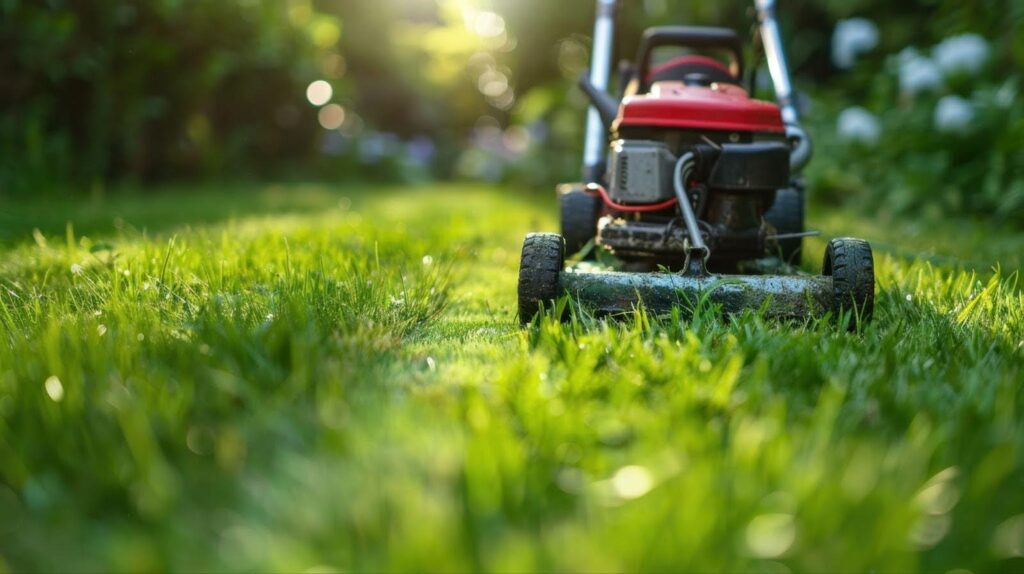
5. Aerate and overseed regularly
Aerating and overseeding regularly are two effective practices for maintaining a sustainable lawn.
Improve soil health
Aeration involves perforating the soil with small holes to alleviate compaction and allow air, water, and nutrients to penetrate the grass roots more easily. Compacted soil restricts root growth and limits the soil’s ability to retain moisture.
By aerating, you create an environment where roots can grow deeper, leading to a more drought-resistant lawn that requires less frequent watering.
Enhances water efficiency
When you aerate the soil, water soaks into the ground more effectively, reducing runoff and water waste. This means your lawn absorbs more of the moisture from rainfall or irrigation, making the most of every drop and conserving water in the long run.
Reduces the need for chemicals
Healthy soil and a dense, thriving lawn are more resistant to weeds, pests, and diseases. By aerating and overseeding, you boost the lawn’s natural defenses. A thick, well-established lawn crowds out weeds, decreasing the need for herbicides and chemical treatments, which can harm the environment.
Encourages natural nutrient cycling
Aeration and overseeding support the natural breakdown of organic matter in the soil, which releases nutrients that grass uses to grow. This process enhances the soil’s nutrient content without relying on chemical fertilizers, promoting sustainable lawn health.
Sustainable lawn care with Monarch Sod
Ready to transform your lawn into a lush, eco-friendly oasis? Buying sod that’s high quality is the first step in sustainable lawn care, and Monarch Sod has the perfect options to suit your climate and soil type. Our expert team is here to guide you in selecting the right grass that’s resilient, beautiful, and easy on the environment.
Contact Monarch Sod today to invest in a healthier, greener lawn for your home and your community. Let’s grow something amazing together!









